Romania And Our Viking Journey to Eastern Europe

Aaron Saunders, River Cruise Advisor
Wednesday, July 6, 2016
“Do you take American? American dollars?” A self-assured tourist is standing at the bar in the InterContinental Bucharest, his arm resting casually on the countertop. He’s got a wad of limp U.S. currency in his hand, and he’s bandying it about as if it were a ceremonial fan.
“We have a conversion exchange,” the waitress answers back. “We convert it into our Lei.”
A smile comes across the man’s face. He flicks through the wad and hands across a series of bills across to the girl. He turns to his barmate as he does so. “See!”, he bellows. “These people like good ol’ American money!”
As this happens, I take a sip of my local Ursus Premium ale and relish in the little moments of humour that travel has to offer.
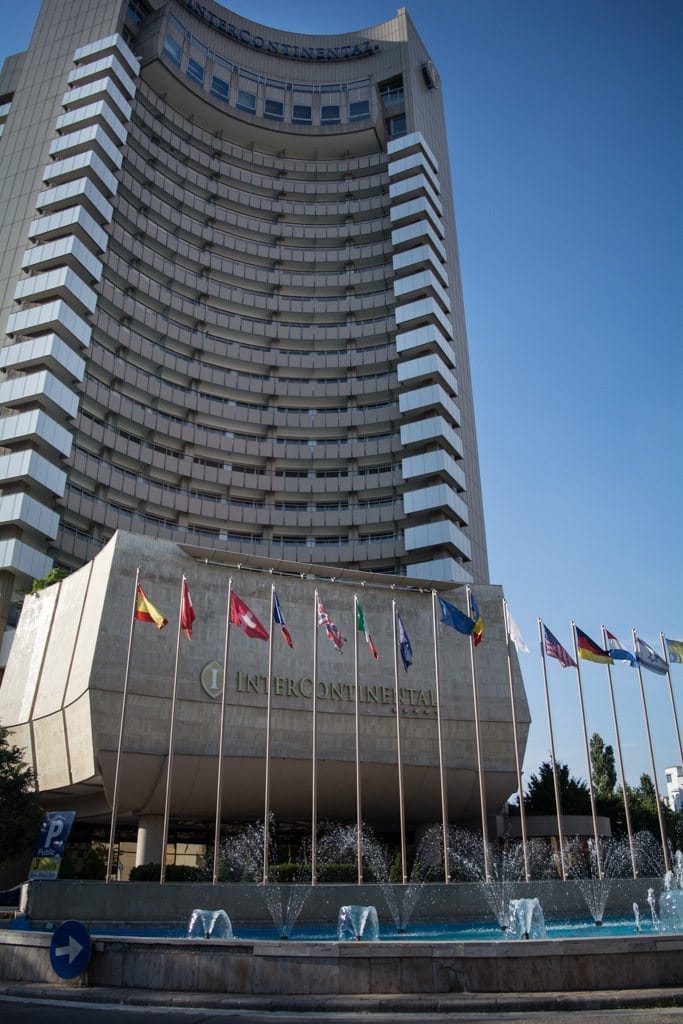
I arrived in Bucharest late this afternoon, ready to join Viking River Cruises’ 10-day Passage to Eastern Europe cruisetour that will take us through the heart of the eastern Danube as we from Bucharest, Romania for Budapest, Hungary.
When you first land at Henri Coandă International Airport, don’t be shocked if you see your fellow passengers – mostly local Romanians – race past you as you deplane. And these people run. That’s about the time I start getting concerned; when the locals make a mad-dash, you know something’s up.
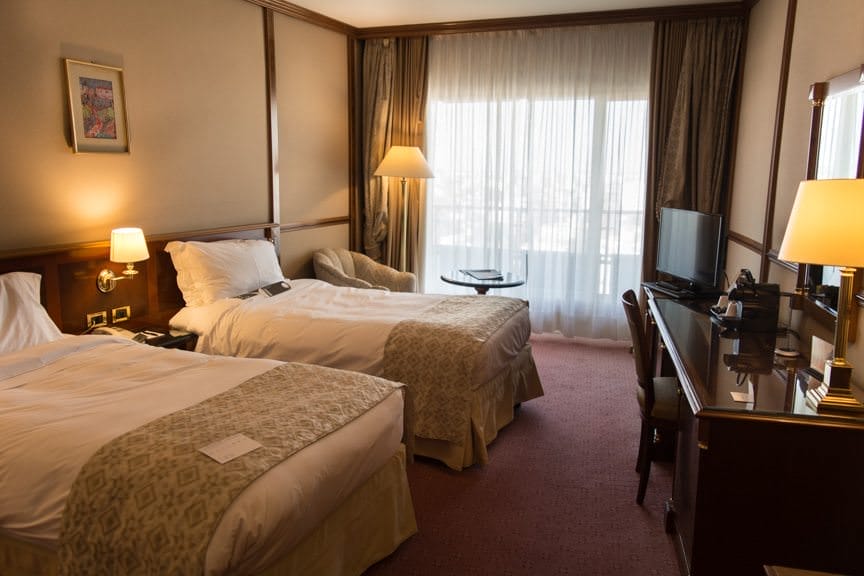
In this case, it’s the immigration procedures: despite having connected in Amsterdam, I wasn’t stamped into the European Union there. That would take place upon arrival in Bucharest. And immigration and passport control at Bucharest International is confined to the smallest room you’ve ever seen, with little to no organization.
That means you have to just squeeze your way through to the head of the pack, at which point the lines split off into kiosks for EU-passengers only and passengers holding all passports. It looks like every traveller’s nightmare, but it moves surprisingly well: total time, from deplaning to clearing customs: about 15 minutes. Add another 10 minutes for luggage delivery, and you can be out of Henri Coandă International Airport in half an hour.
But once you claim your baggage and step out into the arrivals hall, you’re in good hands: a smiling Viking River Cruises representative, clad in a red polo shirt and holding a red logo-brand clipboard, is there to greet you. You name is ticked off a list, and you board the dedicated Viking coach. It’s just that easy.
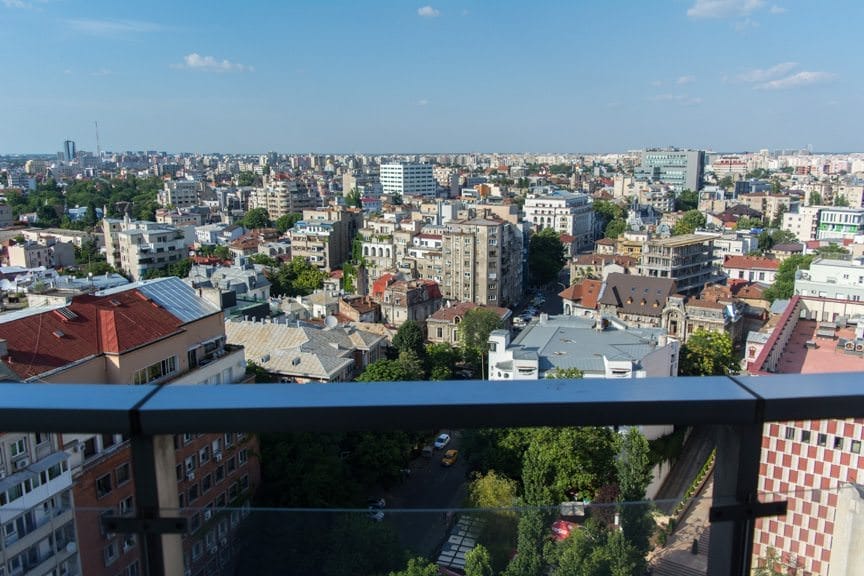
Once we’d arrived at the InterContinental Bucharest, our local Viking representative had pre-checked us in to our rooms. All we had to do was pick up the keycard from her, along with an information sheet and options for tomorrow’s tours from the Viking hospitality desk.
I’ll say this: the Bucharest InterContinental isn’t the nicest InterContinental property I’ve ever stayed at, but all the expected amenities are here, from the soft beds to the friendly service. Rooms are spacious and large, if a little quirky: the child-proof safety system on the balcony door looks like it could keep in Houdini, and the main keycard location and lightswitch in the entry hall is positioned at kneecap level.
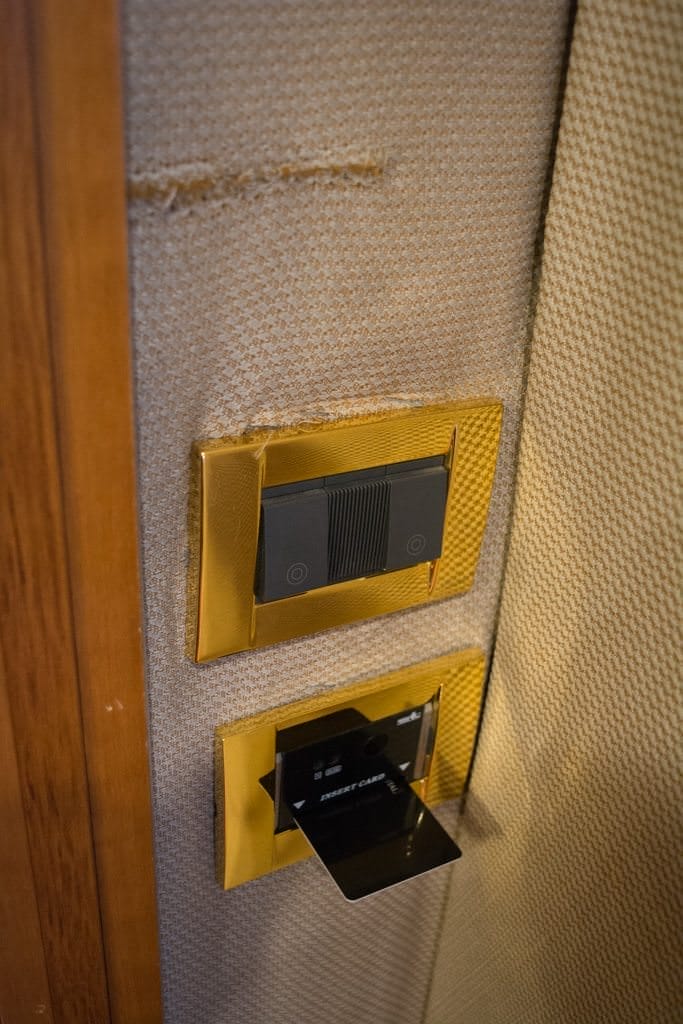
One thing I really love, though, is that travel with Viking is travel simplified. With everything planned out (and written out) for us, there’s no mysteries about what to expect tomorrow, or when we need to put our luggage outside our rooms (8:00 am), or when breakfast is served. Yet it is shocking to me how many companies get this simple step wrong. We’ve all been there, too: the information package some lines say “will be given to you at check-in to your hotel” have an odd way of vanishing into thin air.
Not with Viking. With Viking, nothing is left to chance. The more I sail with the line, the more I appreciate them for that. They’re setting the golden standard on the rivers and the oceans, and frankly, I can’t wait to see what they do with these next 10 days of exploration on the Eastern Danube.
Thursday, July 7, 2016 – Embarking Viking Embla
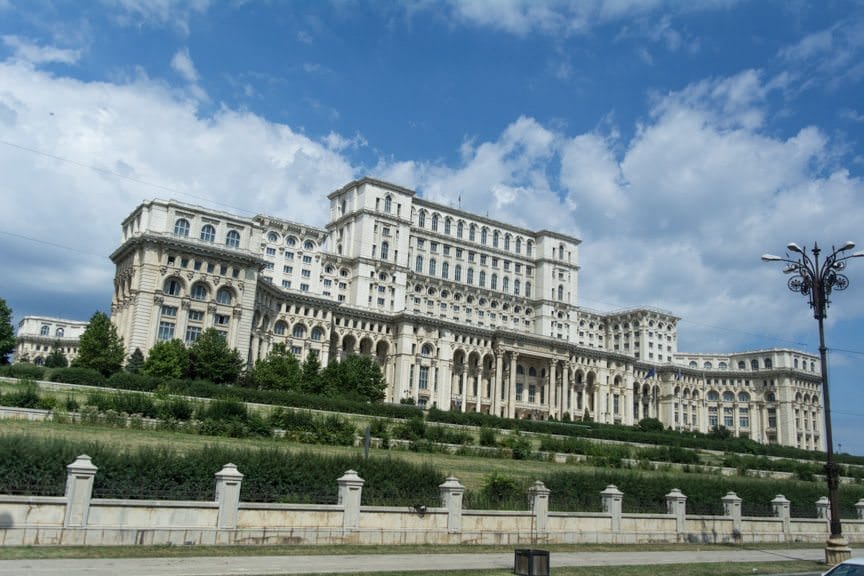
“Do you take American dollars?” It’s echoes of last night at the bar. The tourist standing next to me is looking expectantly at the guard at the Palace of the Parliament in Bucharest, Romania. Like me, he’s trying to buy a photo-permit pass for 30 Lei. It’s about $8 USD – but all he has are US Dollars.
“No,” the guard unenthusiastically answers. “Only Lei.”
“You’re sure?”
“Lei!”, he roars. “Only Lei!”

It’s one of those moments that I’m always shocked to see happen in the first place. If you’re reading this, please, please, please take some local currency out of an ATM when you arrive in a foreign country. It’s respectful and, most of all, useful for purchasing goods and services. The intrepid traveller to my left lacked this currency. Another guest kindly spotted him the cash, and he purchased his photo-permit. I was hoping the guard would say something vaguely Soviet for old time’s sake, perhaps bemoaning the “decadent ways of you Westerners, always me, me me, me,” but I was disappointed: our friendly neighborhood guard remained mum.
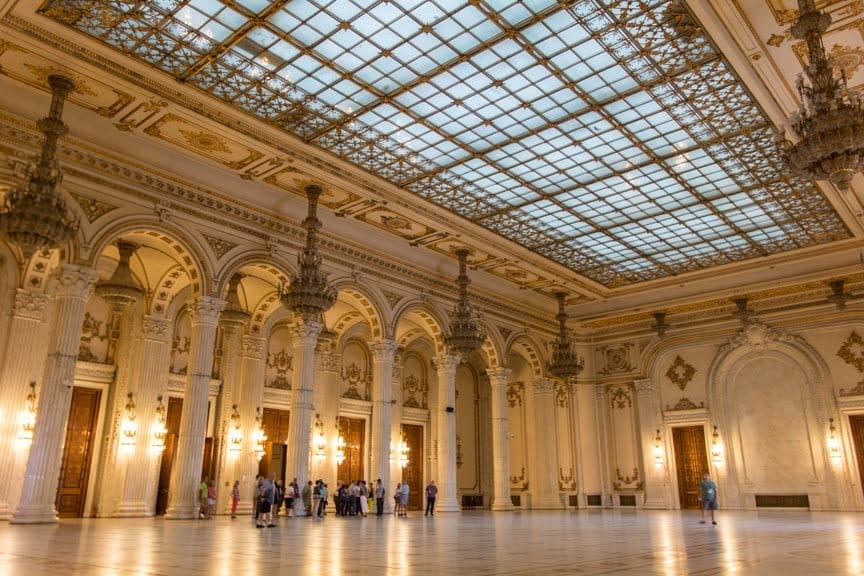
The Palace turned out to be the highlight of our complimentary full-day tour offered by Viking here in Bucharest. Over the course of eight hours, Viking would treat us to a full-day of delights in Bucharest, from the imposing (and very Soviet) Palace of the Parliament to the down-and-out, Orwellian Peasants Museum. Lunch at a local restaurant was included, along with wine and soft drinks, before we embarked Viking Embla just outside of town on the River Danube.
The Palace of the Parliament is the largest administrative building in the world after The Pentagon in the United States. It was built between 1984 and 1997, initially at the behest of Nicolae Ceausescu, Romania’s second (and last) Communist leader.
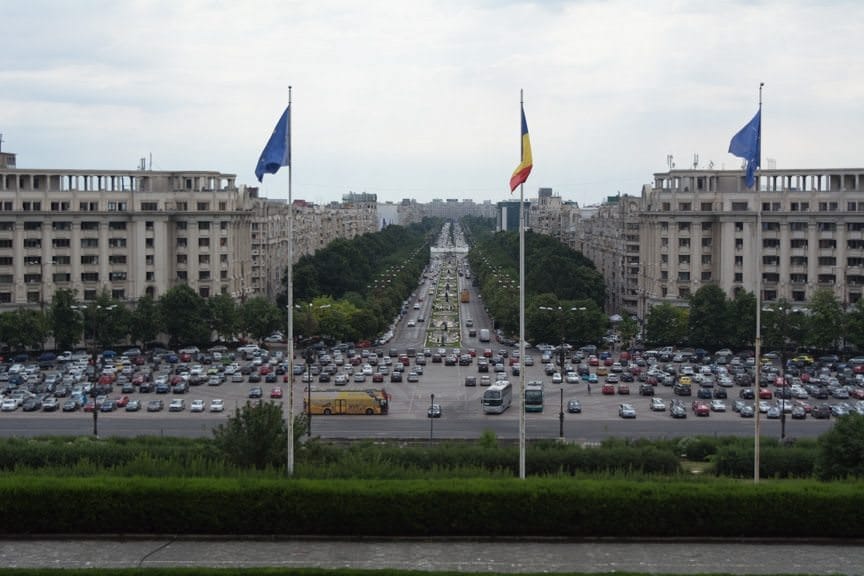
Ceausescu was also a world-class megalomaniac who cared little for the people. Under his regime, extreme shortages of nearly every good and service imaginable fell into place as he sought to export Romania’s natural resources to the highest bidder. Even by Soviet-Bloc standards, Ceausescu towed a hard-line stance. Intolerant of any perceived opposition, he silenced critics, the media, and the average working man using any number of diabolical tactics.
The list of “all-out-crazy” that was Nicolae Ceausescu goes on forever. The most telling feature, however, was the one he never got to enjoy: a massive balcony built into the Palace of the Parliament, where Ceausescu planned to hold his balcony harangues; morale-boosters for a starving, dirt-poor populace.
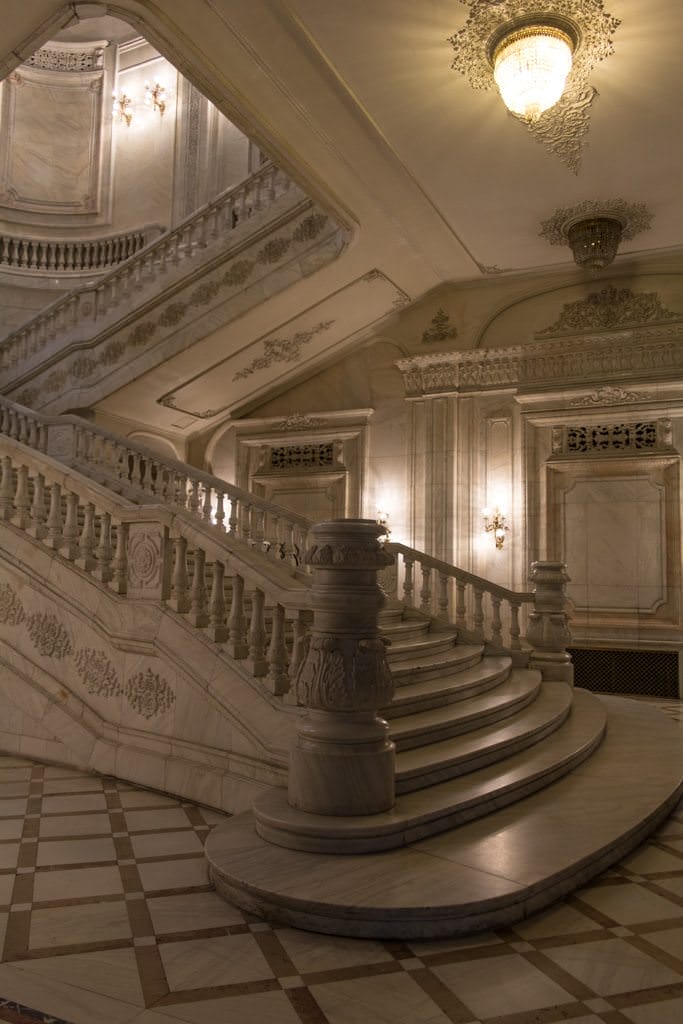
Ceausescu never got to see the completion of the Palace: after ordering the military to fire on unarmed civilians protesting his policies, he fled the capital with his wife in-tow. Betrayed by his helicopter pilot who landed just a few kilometres away, he and his wife were captured, tried, found guilt, and executed on Christmas Day, 1989.
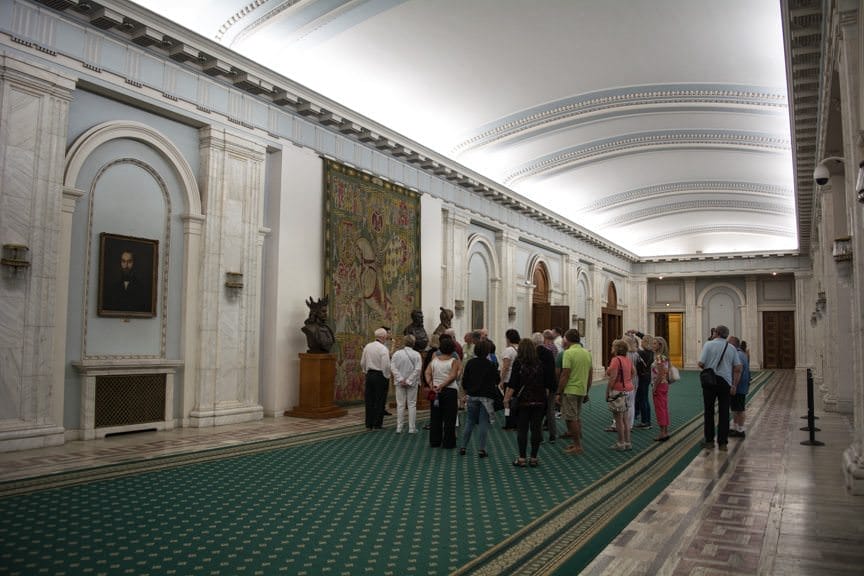
Today, the Palace is an incredible sight: a breathtaking building that is at once a modern work of art and the last, dying gasp of the Soviet Union of old. It was built without air conditioning and, apparently, electrical outlets: electrical cords for appliances lie duct-taped around walls and ballustrades throughout the building.
At the nearby Peasants Museum (accessible via a half-hour in Bucharest’s diabolical traffic jams), the rural, agrarian way of life of the average Romanian living in the 1600’s was presented to us. A sort of “Living Museum”, this is one sight that’s not to be missed.
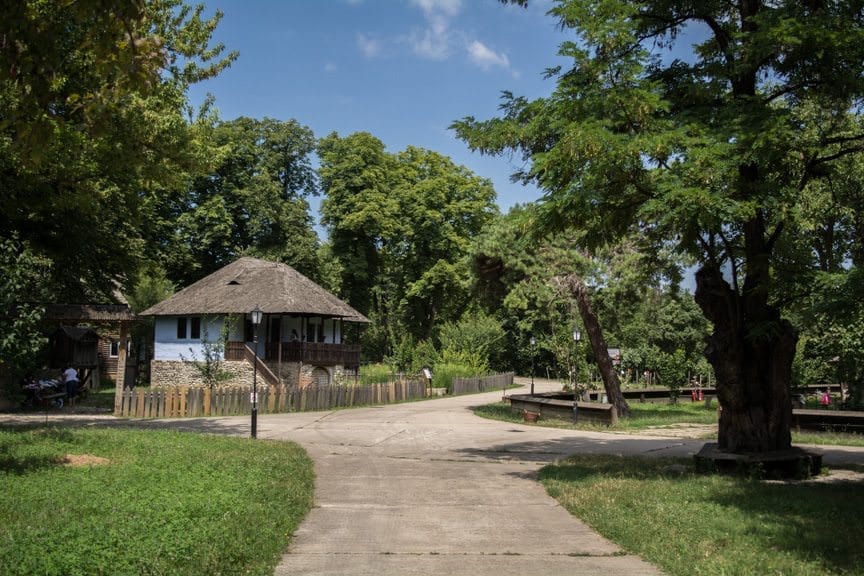
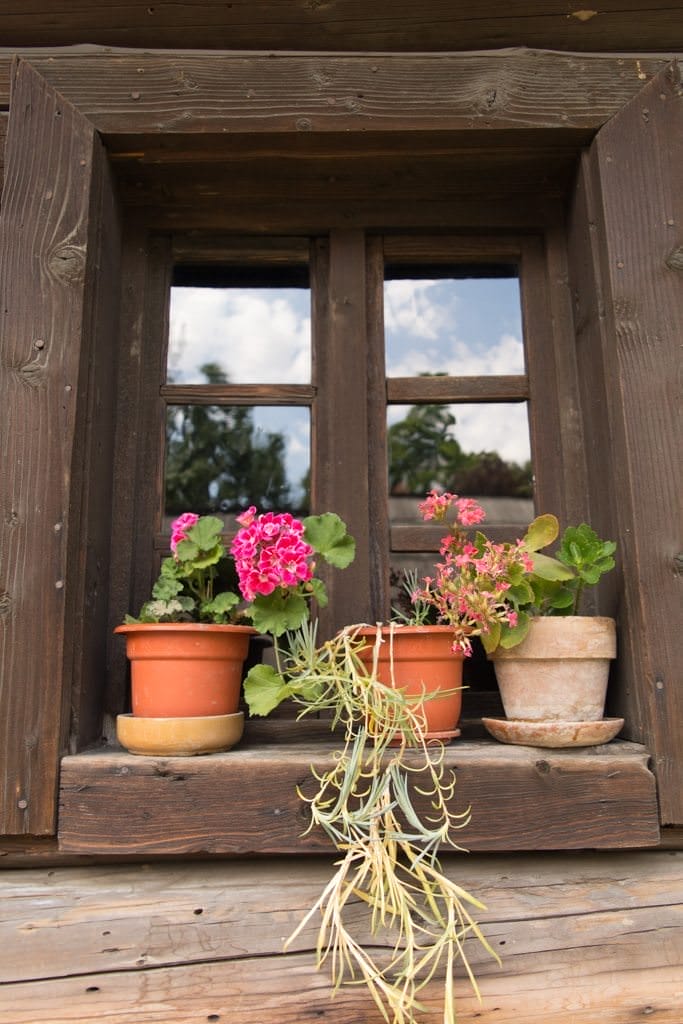
After lunch it was time for the big event: embarking the 190-guest Viking Embla just outside of Bucharest, which we did shortly after 5:00 p.m.
Viking Embla is one of Viking’s first Viking Longships. She set sail in late 2012, and I first visited her in December of that year when a good friend of mine was the hotel manager. She was the first Viking Longship built without a chandelier gracing the atrium; a good design move, as it turned out, as the chandelier found aboard Viking Odin, Viking Idun, Viking Njord and Viking Freya was pretty hard to clean and obstructed the overall view.
In the past, I’ve mainly sailed new – or nearly new – Longships. Not that four years is old; it isn’t. But in ship terms, after four years of use, most ships start showing wear-and-tear. Not Viking Embla; she sparkles like new. She also reveals just how far Viking has come with its overall Longship design.
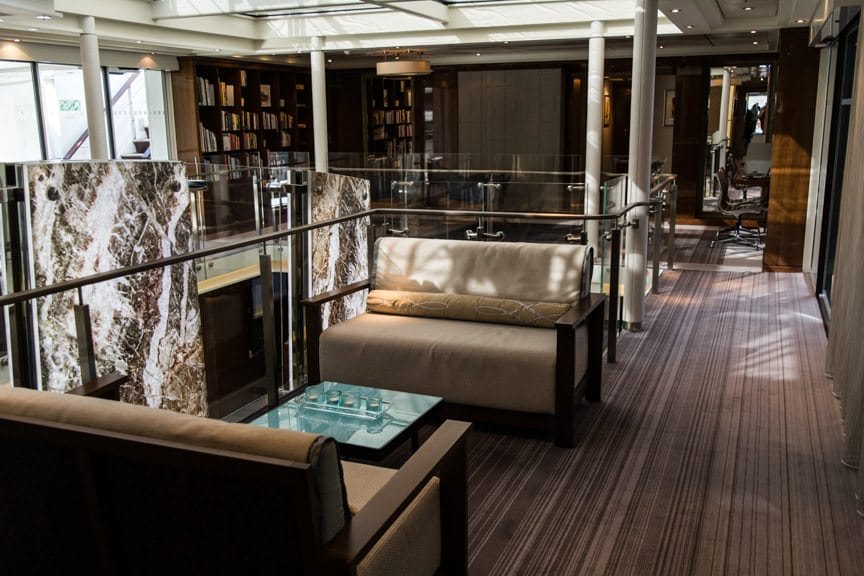
Make no mistake about it: these Viking Longships are identical in design, layout and amenities, but very different when it comes to the little details. Viking Embla represents Version 1.5 of the overall Longship design: her Restaurant and Lounge are nearly identical to the first Longships introduced in March of 2012, but staterooms have been modified with different light switches, electrical outlets, bathroom layouts, and a more spacious atrium that introduced woodgrain stairs and better soundproofing throughout.

In the stateroom are some elements that have since been rectified on later Longships. The once glass closet doors are now wooden (the original sea-foam green glass broke too easily), and Viking Embla still sports the tapered desk/vanity area that is too small to place a laptop computer on at the far end. It also doesn’t have as many power outlets compared with newer Longships.
But Viking Embla absolutely sparkles. In fact, I felt a bit nostalgic when I arrived in my Category B Veranda Stateroom on Deck 2: everything I love about Viking is still here, from the amazing on-demand video entertainment system (which I love for its streaming music playlists) to the comfortable beds, excellent fit-and-finish, and overall Scandinavian design touches.
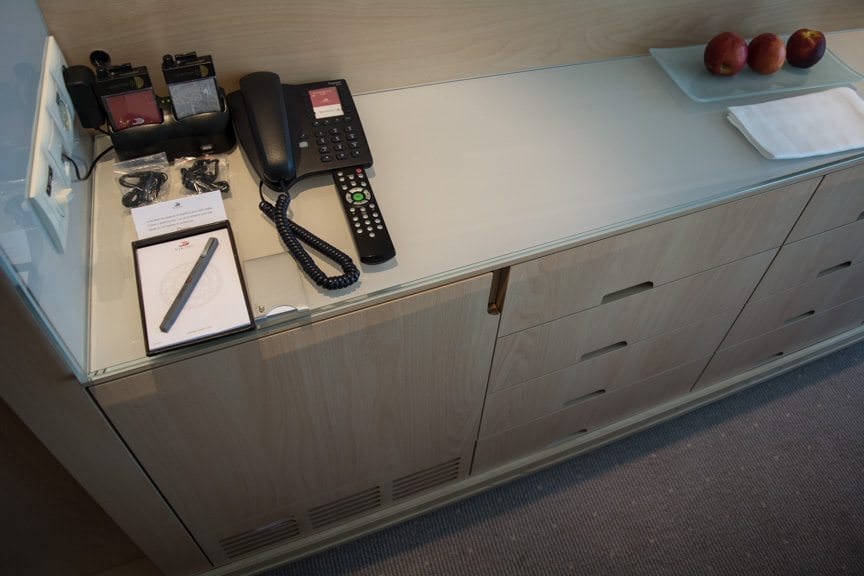
Throughout the ship, there are signs of constant upkeep. Carpets throughout staterooms, corridors and public areas are soft and squishy, and seem newly-installed. The colour pattern relies more heavily on earth-tones than the modern (and very nautical) blues and greys that Viking has adopted for its oceangoing Viking Star and Viking Sea, as well as the latest iteration of river cruise ships.
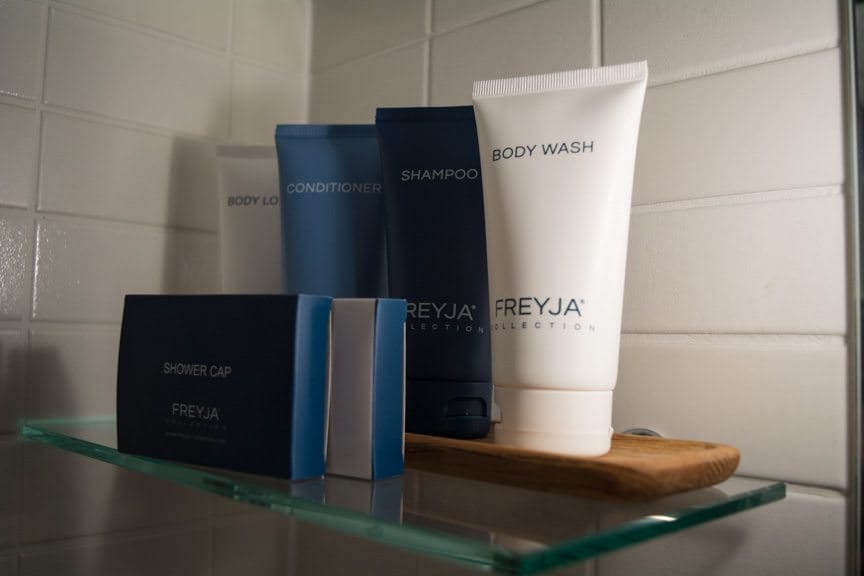
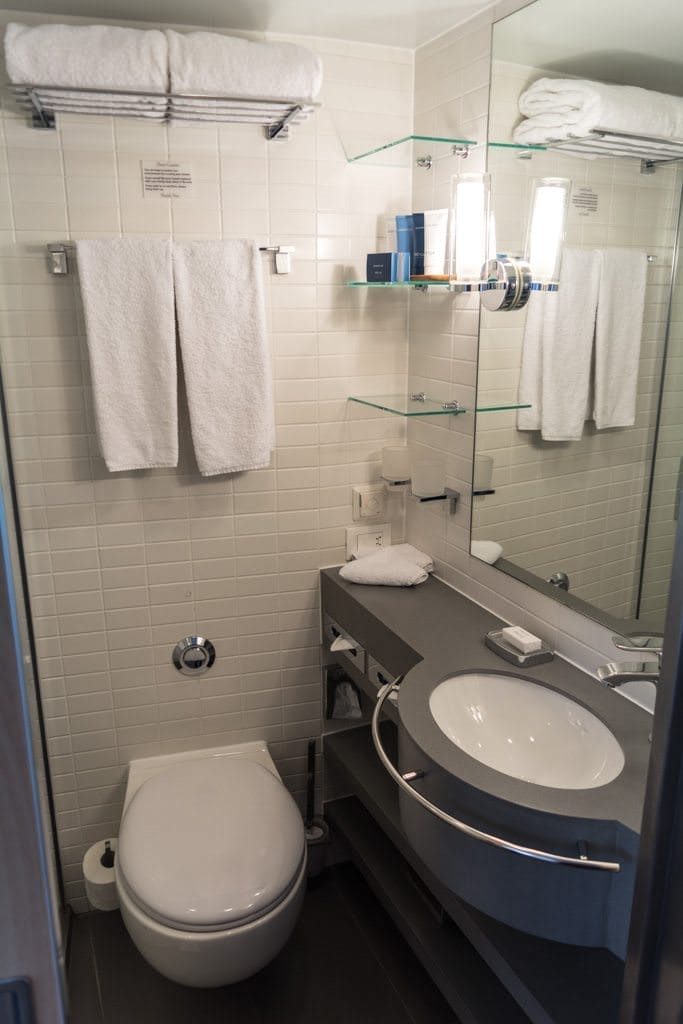

Everything I love about Viking is present here on Viking Embla, from the excellent storage space in the staterooms to the backlit closets to the little candies on offer in the Reception Lobby. But one interesting change has occurred: Viking has replaced the L’Occitane toiletries in the stateroom with the Freyja toiletries found aboard the line’s oceangoing fleet.
Now, I love L’Occitane – don’t get me wrong. But I love the Freyja toiletries equally, and I’m glad to see that Viking has standardised its amenities across the line. And yet, my senses are somewhat confused: when I opened the bar of soap in my stateroom to wash my hands, I was flooded with memories of Viking Star and Viking Sea. When I pulled out my L’Occitane moisturizer – in all likelihood lifted from a past Viking river cruise – I got that “Viking” rush again.
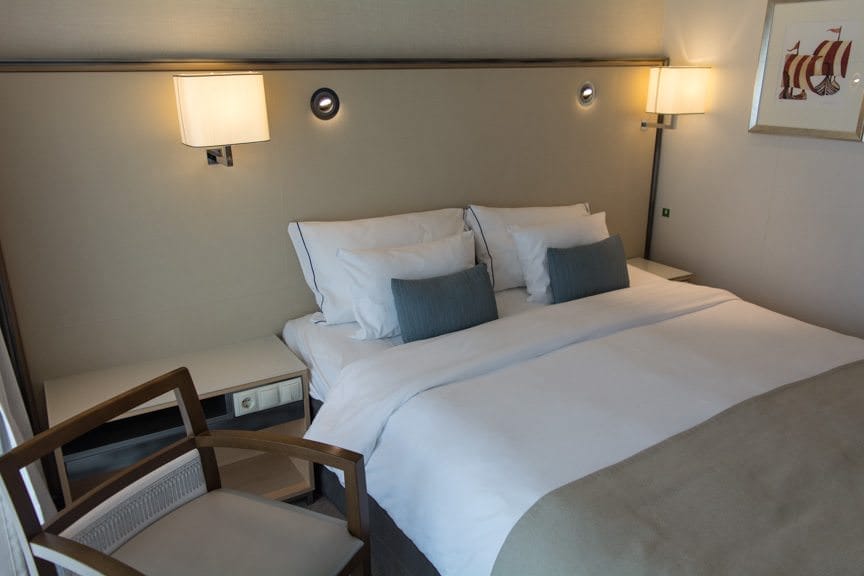
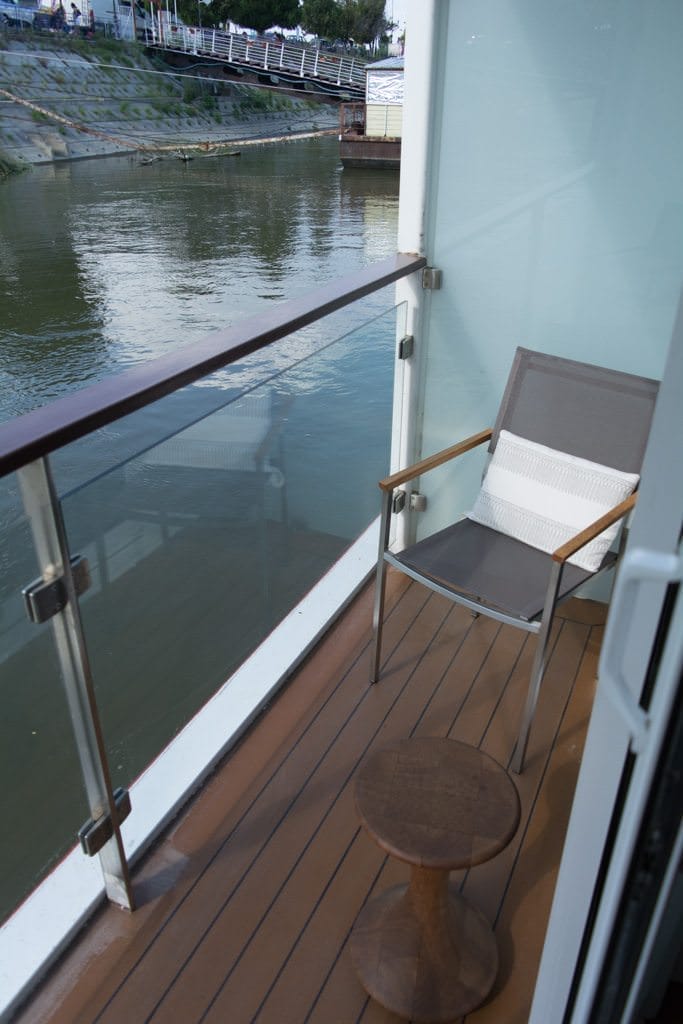
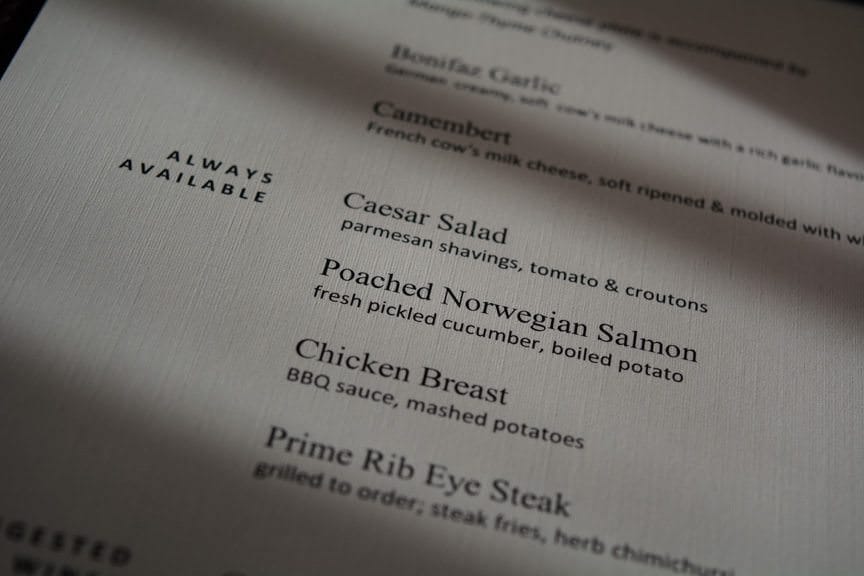
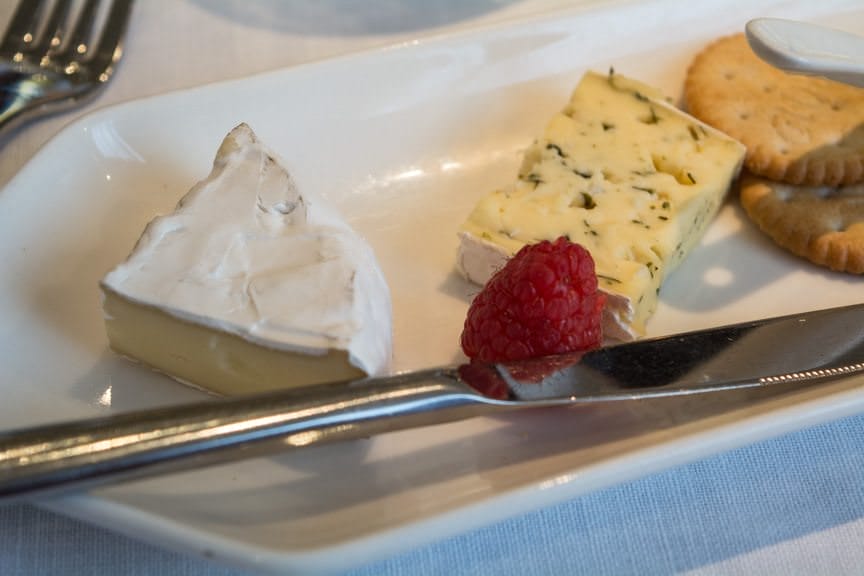
I’ve taken a lot of river cruises on a lot of different lines. Each has its own strengths and weaknesses. But Viking is one of the only river cruise lines to make me feel, no matter where I am in the world, as if I’ve truly arrived home when I step aboard one of its ships. They’re so well-designed, and staffed with such friendly crews, that sometimes I have to pinch myself.
Consistency is hard to achieve – yet Viking has done it again, exceeding my expectations right on Day One. And there’s a lot more to come!
From my home on Viking Embla to yours – goodnight!
Our Voyage Report from onboard Viking River Cruises’ Viking Embla in Eastern Europe will begin tomorrow from Bucharest, Romania! Be sure to follow along on twitter @deckchairblog or using the hashtag #LiveVoyageReport.
Viking's Passage to Eastern Europe
| Day | Port |
|---|---|
| Day 1 & 2 | Bucharest, Romania |
| Day 3 | Veliko Tarnovo & Arbanassi, Bulgaria |
| Day 4 | Vidin, Bulgaria |
| Day 5 | Cruising the Iron Gates |
| Day 6 | Belgrade, Serbia |
| Day 7 | Vukovar & Osijek, Croatia |
| Day 8 | Kalocsa, Hungary |
| Day 9 | Budapest, Hungary |
| Day 10 | Budapest, Hungary |
| Day 11 | Recapping our Journey |






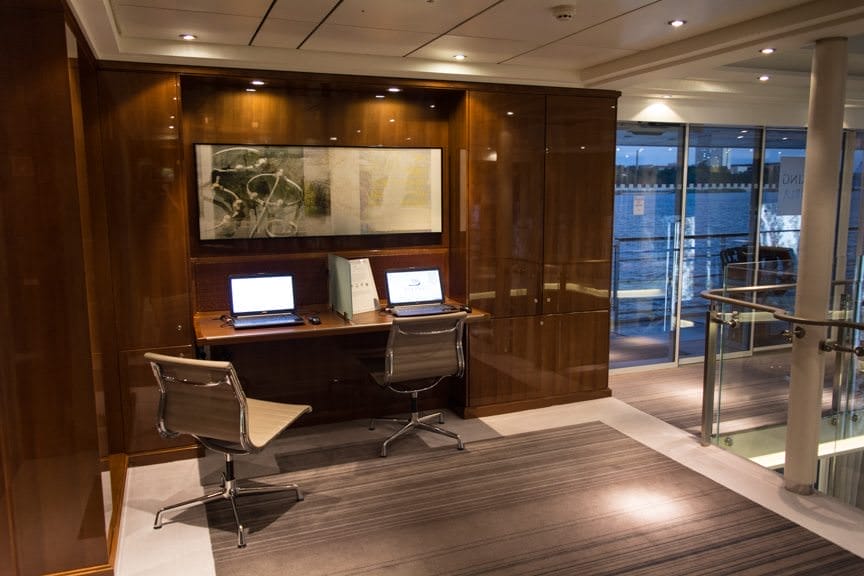











4 Responses
What a wonderfully thorough review! I was worried about the toiletries switch from L’occitaine to what looks sort of common and chincy but glad to know that you like it.
I stayed in that InterContinental back in 1990, just a few months after Ceausescu and his wife were shot. Bucharest was indeed a grim place then; the hotel had very limited menus, with bizarre and unexpected “luxury” foods, just like the old days of the USSR in Moscow, where one would be offered “Chicken Ministry Style”. The heart sank imagining what chicken in the style of the Ministry of Heavy Industry or the Ministry of Public Health might be like. Ditto in early 1990s Bucharest.
Thanks Eric! The double does indeed convert into two twins; the bedside table (out of frame) gets moved into the center of the room. Just enough room between the two beds for a person to stand. It’s a tight fit but it does work.
Hi Aaron Great report! Looking forward to following the trip. Does the double convert into twin beds? It looks like tight space to accomplish that.